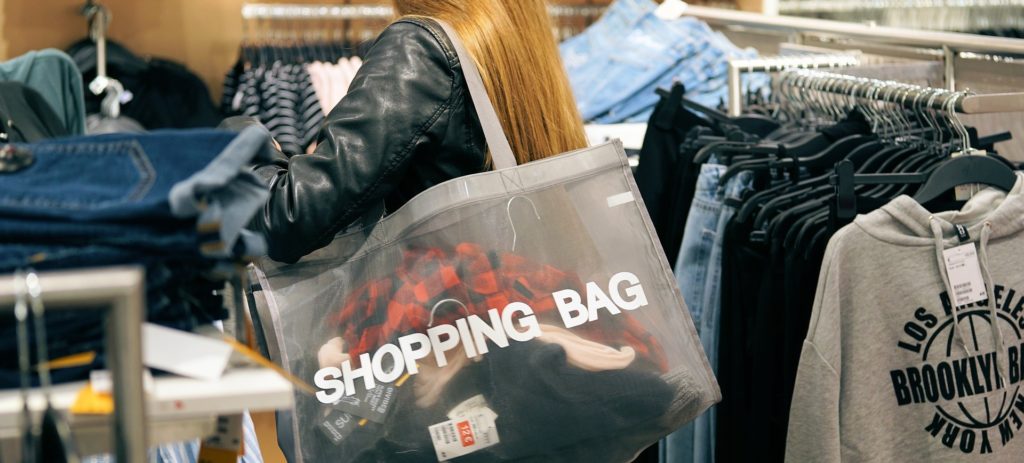Neuromarketing – Marketing Tactics Based on Psychology Research

Have you ever visited a website and seen a “Sign Up” or “Download” button at the bottom of the page that looked so well-designed and appealing that you just HAD to push it? Now compare that to the small, uninteresting buttons on websites just a few years ago with their suspicious Times New Roman fonts and their caveman-esque WordArt shading. The reason why advertising and marketing has become so much more stylish and effective these days is because marketing has developed into a full-blown science where everything from the position and color of a button to the smell and weight of the products in stores is measured and tested for maximum appeal.
 Neuromarketing is a subset of marketing that uses methods from psychology research to observe how people’s brains react to various types of ads and campaigns. It uses EEG, FMRI, eye tracking, and facial coding to study physiological reactions to different types of marketing tactics. The results from these studies have allowed marketing teams to create messages that are optimally attractive to the average customer.
Neuromarketing is a subset of marketing that uses methods from psychology research to observe how people’s brains react to various types of ads and campaigns. It uses EEG, FMRI, eye tracking, and facial coding to study physiological reactions to different types of marketing tactics. The results from these studies have allowed marketing teams to create messages that are optimally attractive to the average customer.
However, big business’ increased exploration into the mechanics of people’s subconscious and the rise in clever marketing techniques has led some people to be concerned about misuse of such information and manipulation of the customer. But in the end, neuromarketing is simply a research tool that offers insights which can be used in a variety of ways, both harmless and potentially questionable. The final decision on whether to buy or not buy, push the button or not push the button, still lies with the customer.
That being said, the way to be maximally in control of our behaviors and decisions is to be aware of the factors that influence them and to engage in critical thinking. Below is a list of marketing techniques based on psychological research that have been implemented by businesses in recent years. Next time you go to a supermarket or embark on an online shopping spree, keep an eye out for them. You might be surprised at the effect they have on you.
Sensory Marketing
Sensory marketing uses stimulation of the senses to influence a customer’s behavior.

Smell – this sense is stimulated for marketing purposes because it is associated with memory and emotion. The right combination of aromas can also influence people’s judgments about the quality of products and the personality of the brand.
Examples:
- Research has shown that people in a nightclub scented like orange, peppermint, and seawater danced longer and reported that they had a better time and liked the music more on those nights.
- Another study found that in a clothing store, “feminine scents” like vanilla doubled sales of women’s clothes and smells like “rose maroc” showed similar results with the sale of men’s clothing.

Sound – The music in stores isn’t there to help you imagine you’re in a music video as you try on new outfits in the dressing room. It creates an ambiance for the shopping experience and has been shown to influence shoppers’ heart rates as well as to influence the pace at which they walk around the store.
Examples:
- It has been shown that slow music makes shoppers shop for 18% longer and make 17% more purchases. Slow tempo music has also been shown to go hand in hand with dining for a longer time in restaurants and spending more money while there.
- Research shows that consumers pay more attention to light colored objects when they hear higher pitched sounds and they pay more attention to darker colored objects when hearing low pitched sounds. These preferences significantly affect their purchase decisions.
- A popular study in this field showed that when French music was played in a wine shop, many more French wines were sold than German wines, and when German music was played, German wines were the ones that sold way more.

Touch – There are certain textures and weights that people react to more positively than others and that we tend to associate with higher quality products.
Examples:
- Expensive cosmetic products often come in heavier packaging like glass whereas the cheaper variety comes in plastic. Even though the substances inside are often very similar, the heavier packaging makes the expensive brand seem more valuable.
- Many expensive restaurants print their menus on thick paper and place them in heavy folders. Heavier materials and certain textures communicate an impression of luxuriousness and high quality that carries over to the products sold by the restaurant.
- One study had subjects judge a candidate for a job by viewing a resume either on a light clipboard or a heavy one. The participants with the heavy clipboards rated the applicant as “better overall” and as “displaying more serious interest in the position.”
Psychological Marketing Methods
Certain words, symbols and numbers can trigger feelings and associations in people’s minds that give them a more favorable opinion of the products in front of them and make them more likely to purchase.
Examples:
- Studies have shown that just removing the dollar or euro sign in front of the price can increase sales. It turns out seeing a currency symbol activates the brain’s thoughts about the loss of money instead of about gain.
- The illusion of progress has been shown to encourage customers to buy more, for example when punch cards are used (think Starbucks or Costa Coffee). In one study experimenters gave customers two different cards: empty cards with 10 unstamped spots and cards with 12 spots out of which two were already stamped. In both groups, a customer needed 10 stamps to get a free coffee. Nevertheless, the group that began with “progress” bought coffee more often than the empty-card group.
- It turns out just claiming your company is trustworthy can increase customers’ perceptions of its trustworthiness. Researchers found that putting the statement “you can trust us to do the job for you” at the end of an ad for an auto service caused their trust scores to increase by 33%.
 Scarcity
Scarcity
When there is a limited amount of something, people feel more of a push to purchase so that they don’t miss out. That’s why you’ll see so many “limited time offer” and “limited supply” claims on commercials and in ads, even if they have plenty of product.
Example:
Udemy often has huge sales, sometimes lowering the price of a course from €200 to €10. Below the discounted price they write “only _ days left at this price!” to get the fire burning under your fingertips.
Decoys
Often companies will throw in a product in a lineup of products that is very similar to the target product they are trying to sell, but slightly worse in some way. This is called a decoy and marketers don’t generally expect to sell this item. However, it can have dramatic effects on customers’ purchase decisions by making the similar option look like a better value. The customer compares the target product to the more expensive decoy and thinks “wow, what a deal!”
Example:
Author Dan Ariely gives the following example to illustrate this principle. Two groups of people were presented with 2 different magazine subscription offers and were asked which one they would choose:
Offer A:
$59 – Internet Only Subscription (68 chose)
$125 – Internet and Print Subscription (32 chose)
Offer B:
$59 – Internet Only Subscription (16 chose)
$125 – Print Only Subscription (0 chose)
$125 – Internet and Print Subscription (84 chose)
As you can see, nobody selected the Print Only option in Offer B, but it doesn’t matter. 52 more people selected the 3rd option at the same price in Offer B than they did in Offer A where there was no decoy!

Anchoring
Anchoring is the theory that people use the first piece of information they receive about a certain product as the reference point for any further information they receive about it later on. It doesn’t even matter if the first information is inaccurate. It becomes stuck in our brains and influences our judgments on the information that follows.
Example:
- If you are buying a used car, the first price you hear will be the price you’ll subconsciously use as a reference point for the rest of the negotiation. Any price lower than this initial anchor price will seem more reasonable, which is why many times you’ll hear an outlandish first offer. Even though you know it’s too much you’ll probably negotiate it down to a higher final price than you would have done with a lower initial price suggestion.
Reciprocation
This is the idea that people will generally repay acts of goodwill, no matter how small they are. However, this only works if the goodwill is done without any (apparent) expectation of a return.
Example:
- Researchers did an experiment in a restaurant to see if gifts increased tips. Servers put a small piece of chocolate on the customers’ check, gave a larger quantity of candy or gave no candy. The study showed that a gift of candy increased the average tip from 15% to almost 18%.

Those are some of the marketing tactics used to guide customers down the path to purchase. Now that you know about them you may notice their presence more often during your shopping experiences. However, there is no need to identify each one in fear that you might otherwise be tricked into doing something you don’t want to do. The final decision about whether or not to spend your hard earned money still lies with you, the customer.
As the father of neuromarketing, Roger Dooley, says, “There’s no way of being so self-aware that you can tune it all out. The way you can prevent yourself from being overly influenced by it is by stepping back as a consumer before you buy something and ask yourself if it’s really something you want or need right now.”
Although marketing is conducted to help businesses sell more, it also usually improves the customer experience by incorporating customer feedback. With awareness about the influencing forces that surround us and an active critical thinking process, you should still be in full control over what goes into your shopping cart. And if that happens to be a ceramic squirrel mug or bright orange crocs, you can always try to blame it on the music playing in the store.
For further reading:
https://www.neurosciencemarketing.com/blog/
http://www.newneuromarketing.com/5-neuromarketing-techniques-every-marketer-should-know-about
http://marketingland.com/6-neuromarketing-principles-designing-persuasive-websites-93828
http://strategylab.ca/helpful-resources/33-lessons-in-neuromarketing/




Recent Comments